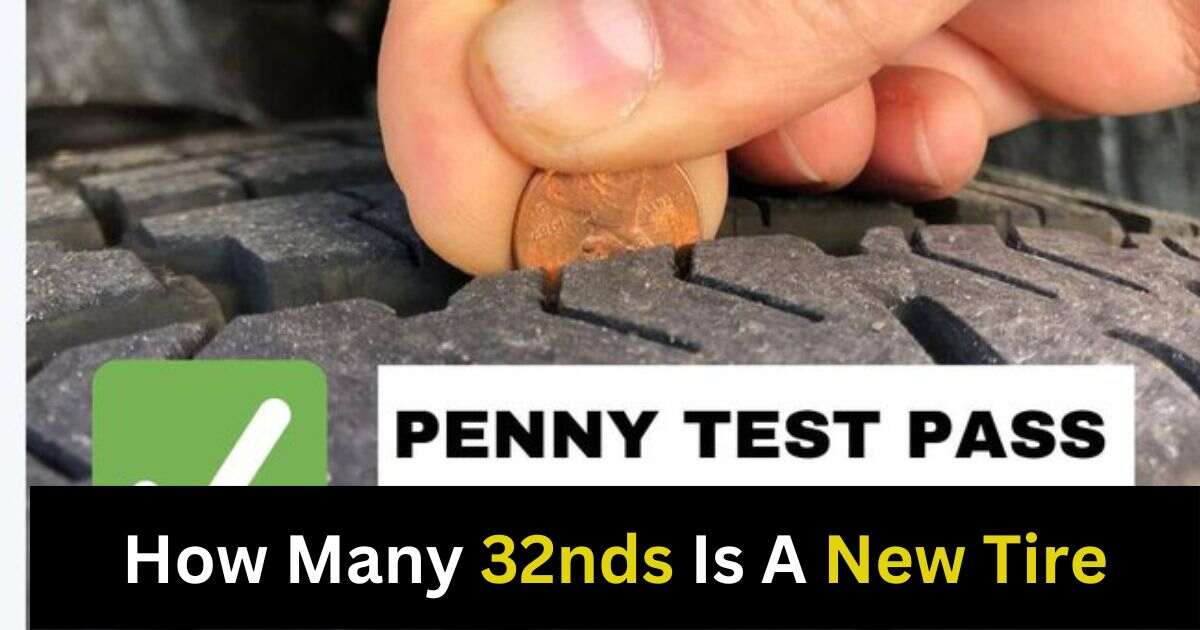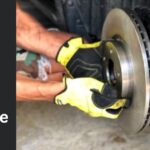How Many 32nds Is A New Tire: Have you ever thought about how well you new tires grip the road? Well, one important things to check is the depth of the tread on your tires. This tells you how healthy and effective your tires are. But sometimes, the measurements are in fractions of an inch, especially in 32nds. Don’t fret! This guide will help you understand what those measurements mean and decode the language of tire tread depth.
How Many 32nds Is A New Tire
Decoding The 32nds: A New Tire’s Starting Line
When you get new tires, they usually have a tread depth between 9/32nds and 11/32nds of an inch. This can change based on the type of tire you’re getting. Regular car tires usually fit in this range, but tires for trucks or winter driving might have deeper treads to help grip rough roads or snowy surface better.

Here’s What Those Numbers Signify:
When you see higher fractions like 11/32nds, it means the tires have more tread, which gives better grip and lasts longer. Lower fractions like 9/32nds mean the tires still have new tread but not as much, which might make the driving feel more sporty. However, you might need to replace them sooner. But remember, these are just general numbers. Always check your tire’s specific measurements to know exactly how much tread they have when new.
Why Do We Measure In 32nds?
Measuring tread depth in 32nds of an inch gives you an accurate way to see how much your tires are wearing out. As you drive, the tread wears down because of friction. Keeping an eye on this small measurement helps you spot when your tires are wearing out too much, so you can replace them before it affects how safely your car drives.
How Many Rotors Does A Car Have
Penny Test Tires
The penny test is an easy way to check your tire tread depth using just a penny! Here’s what you do:
- Take a penny and turn it upside down so Lincoln’s head is facing the tread of your tire.
- Stick the penny into one of the grooves on your tire with Lincoln’s head first.
- Look at the top of Lincoln’s head. If you can’t see the top of his head because it’s covered by the tread, your tires are probably good.
- But if you can see all of Lincoln’s head, your tread is too shallow, and you should think about getting new tires for safe driving.
Just remember, while the penny test is helpful, it’s a basic way to check. For a more accurate measurement, you can ask a tire expert or use a special tool called a tread depth gauge. Still, the penny test is a handy trick to keep an eye on your tire health and stay safe on the road.
Don’t Let Your Tread Wear Thin: Replacement Time
How long will your tires last before the tread wear out? Well, it depends on how you drive, the roads you’re on. and how good your tires are, But generally, most tire makers say you should get new tires when the tread is down to 2/32nds of an inch. This is also the legal limit for safe driving in many places.
Lots of tires come with built-in indicators to show when the tread is wearing out. These are little raised parts that you can see when the tread gets too low. Just look for a small rubber bar in the grooves of the tire. If these bars are flush with the surface of the tread, it’s a sign that you need new tires.
Knowing about the initial tread depth in 32nds and watching out for wear helps you make sure your tires work well and keep you safe while driving. Remember, taking care of your tires properly is super important for staying safe and saving money in the long term.





